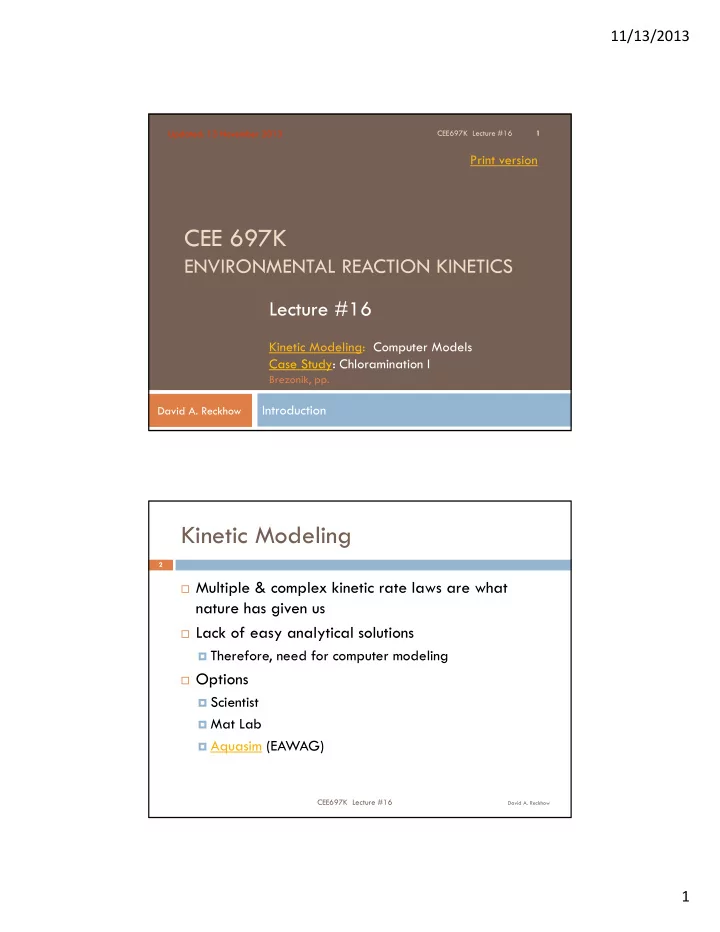

11/13/2013 Updated: 13 November 2013 CEE697K Lecture #16 1 Print version CEE 697K ENVIRONMENTAL REACTION KINETICS Lecture #16 Kinetic Modeling: Computer Models Case Study: Chloramination I Brezonik, pp. Introduction David A. Reckhow Kinetic Modeling 2 Multiple & complex kinetic rate laws are what nature has given us Lack of easy analytical solutions Therefore, need for computer modeling Options Scientist Mat Lab Aquasim (EAWAG) CEE697K Lecture #16 David A. Reckhow 1
11/13/2013 Chloramines 3 Inorganic chloramines are formed by the reaction of free chlorine with ammonia. The reaction is stepwise, giving monochloramine (equation 1) followed by dichloramine (equation 2). The dichloramine is quite unstable, forming nitrogen gas (equation 3) and some nitrate. This decomposition is responsible for the classic breakpoint chlorination phenomenon. NH 3 + HOCl --------> NH 2 Cl + H 2 O (1) NH 2 Cl + HOCl --------> NHCl 2 + H 2 O (2) NHCl 2 + NHCl 2 + H 2 O --------> HOCl + 3H + + 3Cl - + N 2 (3) CEE697K Lecture #16 David A. Reckhow Chloramines: Breakpoint Curve 4 MCA = monochloramine The Breakpoint DCA = dichloramine FRC = free residual chlorine Combined Free MCA DCA FRC Chlorine Dose CEE697K Lecture #16 David A. Reckhow 2
11/13/2013 Chloramination and regulated DBPs 5 Preponderance of DHAAs; very little THM, TCAA Cowman & Singer, 1996 EST 30:1:16 Zhang et al., 2000 In Natural Organic Matter and Disinfection Byproducts, ACS Symp #761, Barrett, Krasner & Amy, eds. HAAs decrease substantially 5-20% of that observed from chlorination (no ammonia addition) Review by Speitel, 1999 DBP formation increases with decreasing pH; possibly the role of dichloramine Speitel, 1999 In Formation and Control of Disinfection Byproducts in Drinking Water, P.C.Singer, ed. Symons et al., 1998 AWWARF report CEE697K Lecture #16 David A. Reckhow 6 To next lecture CEE697K Lecture #16 David A. Reckhow 3
Recommend
More recommend